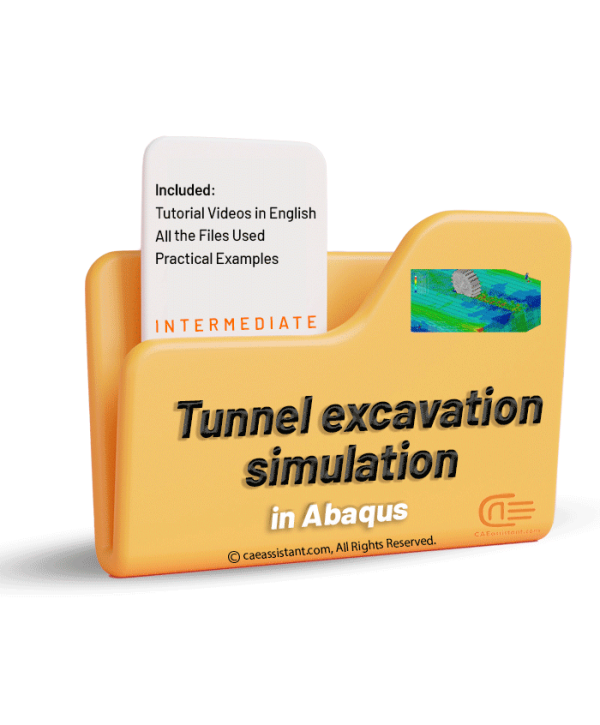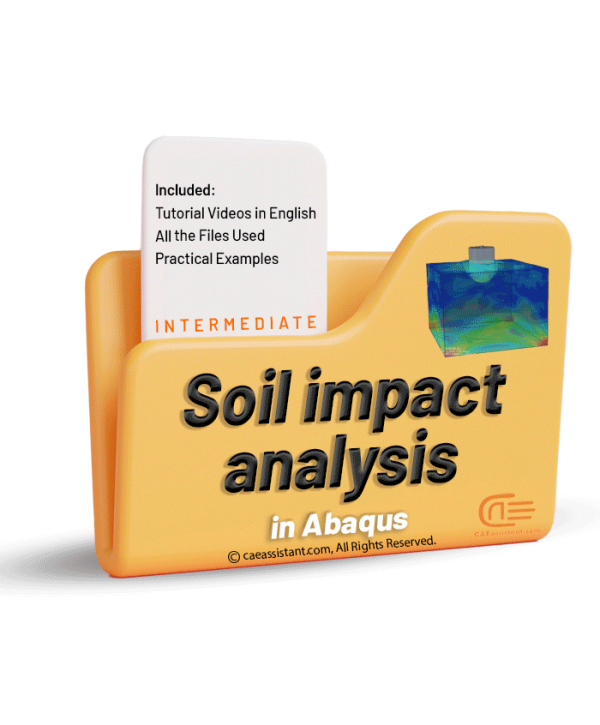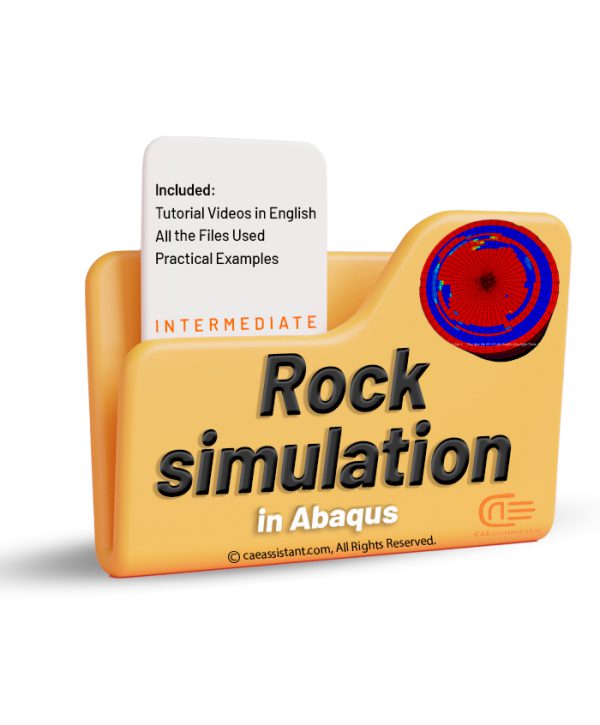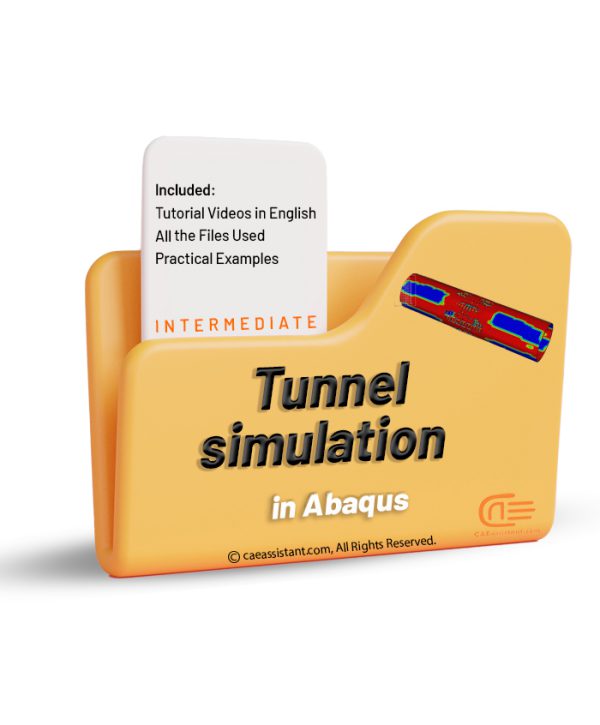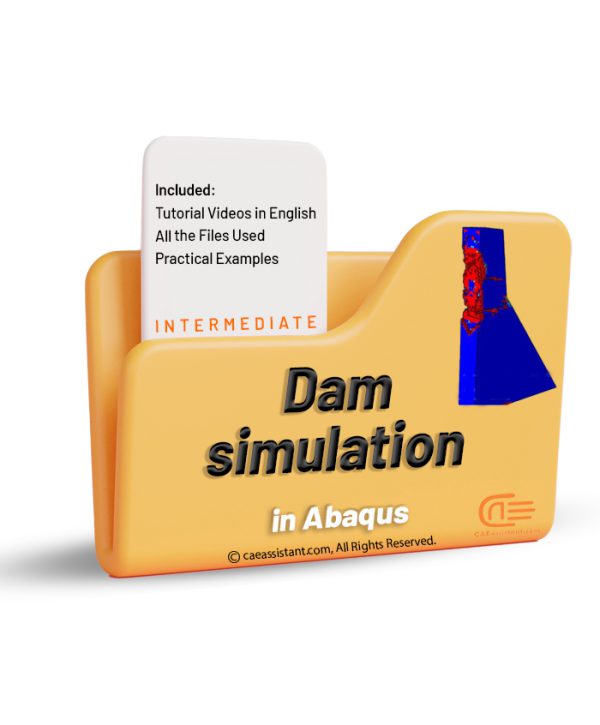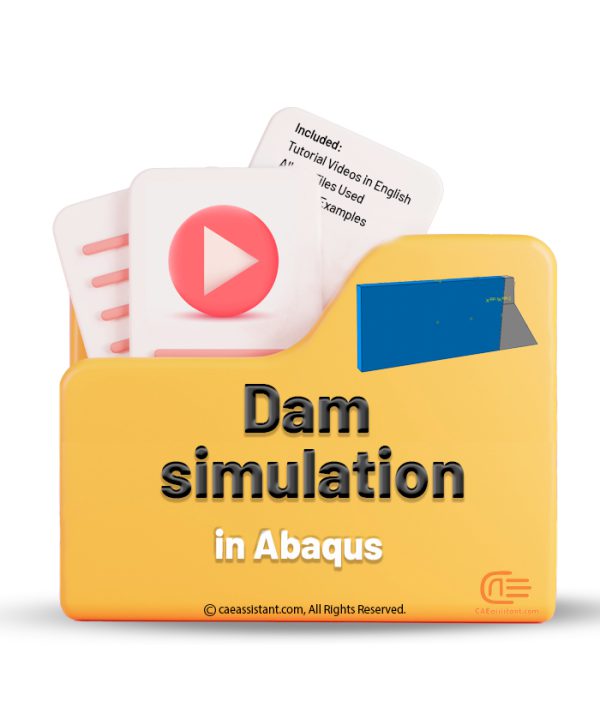Soil and Geoscience Bundle
Tunnel excavation simulation using TBM in Abaqus
Notice: This package will be available one week after purchase.
Tunnel Boring Machines (TBMs) are advanced construction equipment used to excavate tunnels with efficiency and precision. These massive machines consist of a rotating cutting wheel equipped with disc cutters, which excavate the soil or rock, and a conveyor system that removes the excavated material from the tunnel. TBMs play a crucial role in various industries, including transportation, mining, and underground infrastructure development. TBM simulation is of utmost importance in the planning and execution of tunneling projects. It allows engineers and project managers to evaluate the feasibility of different tunneling methods, optimize the design and operation of TBMs, and predict potential challenges and risks. By simulating the TBM's performance and behavior under various geological conditions, factors such as ground stability, excavation rates, cutter wear, and potential impacts on surrounding structures can be analyzed and mitigated. In this package, you will learn how to do a TBM simulations by several practical examples.
Soil Impact Analysis in Abaqus
Soil impact refers to the interaction between a solid object and the soil, wherein the object collides with or penetrates into the soil. This issue holds great importance across various industries, including civil engineering, geotechnical engineering, construction, and transportation. Understanding soil impact behavior is crucial for designing and assessing the safety and performance of structures and systems subjected to dynamic loads, such as vehicle collisions, pile driving, and projectile impacts. Simulation plays a vital role in studying soil impact. By employing advanced numerical methods and software tools like Abaqus, researchers and engineers can accurately model and analyze the complex interactions between objects and soil. Simulation allows for the investigation of various parameters, such as impact velocity, soil properties, object geometry, and boundary conditions, to assess their influence on the response and behavior of the system. In this package, you will learn how to do soil impact simulations in several practical examples.
Rock simulation in Abaqus
Rock simulation is essential for evaluating the behaviour of rock masses under various loading conditions, such as earthquakes, landslides, and blasting. It enables engineers and geologists to assess the stability and integrity of rock structures, predicts potential failure modes, and develop effective mitigation strategies. Rock simulation is crucial in the design and planning of mining operations, tunnels, and underground constructions to ensure the safety and longevity of the structures. It also plays a vital role in assessing the seismic hazard of an area and evaluating the potential impact of earthquakes on the built environment. In this package, you will learn how to do an impact simulation on a granite stone using the JH-2 model; also an explosion simulation inside a rock for excavation purposes. You can learn more detail in the description of the workshops.
Tunnel Simulation in Abaqus
A tunnel is an underground or underwater passage for transportation, utility lines, or water pipelines. Tunnels are critical infrastructure, and their safety and reliability are essential for ensuring public safety and the smooth functioning of society. Tunnel simulation involves using computer models to predict the behaviour of tunnels under different types of loading conditions, such as earthquakes, floods, or explosions. These simulations can help engineers and policymakers assess the safety and reliability of tunnels, identify potential failure modes, and develop strategies to mitigate risks. By using advanced simulation techniques, engineers can better understand the complex behavior of tunnels and design more effective and durable structures. Tunnel simulation is an essential tool for ensuring the safety and resilience of tunnels and the infrastructure they support. Some workshops are presented in this package to teach you how to simulate and analyze tunnels in Abaqus; two of these workshops are Damage analysis of an underground box tunnel subjected to surface explosion and Tunnel dynamic analysis subjected to internal blast loading using CEL method.
Dam simulation in Abaqus
A dam is a large concrete or earthen barrier built across a river or other waterway to create a reservoir for storing water. Dams are critical infrastructure for providing water for irrigation, drinking, and hydroelectric power generation. However, they are also susceptible to damage from natural disasters and human-made threats, such as earthquakes, landslides, and terrorist attacks. Abaqus can predict the behavior of dams under different loading conditions, including earthquakes, floods, and explosions. It also can model the interaction between the dam, water, and soil, making it a comprehensive and powerful tool for dam engineering. In this package, you will learn how to model dams in different conditions, such as dam simulation subjected to earthquakes in interaction with water and soil and dam simulation subjected to an underwater explosion.
Geostatic analysis in Abaqus
Geostatic Relates to the pressure exerted by the earth or similar substance. Total stress at a point due to the combined weight of the soil or rock (solids plus water) and the load on the foundation is called Geostatic stress. Geostatic analysis is used in cases such as earthquakes, designing a dam, analyzing the foundation of a structure, etc. In this package, three workshops are presented to learn the Geostatic analysis: The first workshop analyzes a water column broke under the weight of gravity, the second workshop simulates an earthquake load over a gravity dam in contact with water and dirt, the last workshop models cylindrical tank's water sloshing phenomenon.
Abaqus Soil Modeling Full Tutorial
All facets of soil modelling and simulation are covered in this full tutorial. The package includes twenty titles on topics such as soil, saturated soil, TBM, earthquake, tunnel, excavation, embankment construction, geocell reinforced soil, geosynthetic-reinforced soil retaining wall, soil consolidation in interaction with the concrete pile, earthquake over gravity dam, infinite element method, sequential construction, calculation of the total load capacity of the pile group, bearing capacity of the foundation. Package duration: +600 minutes
